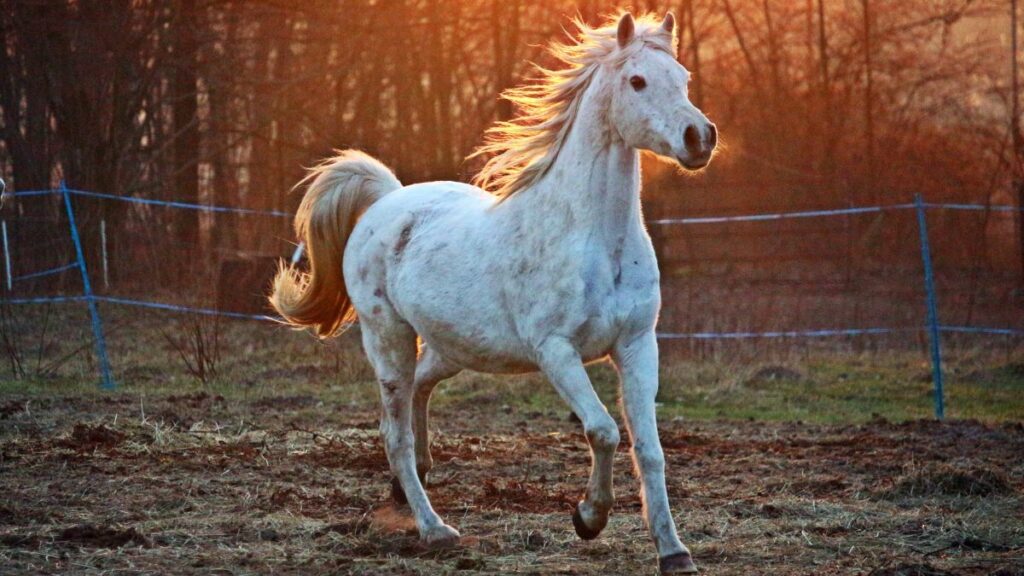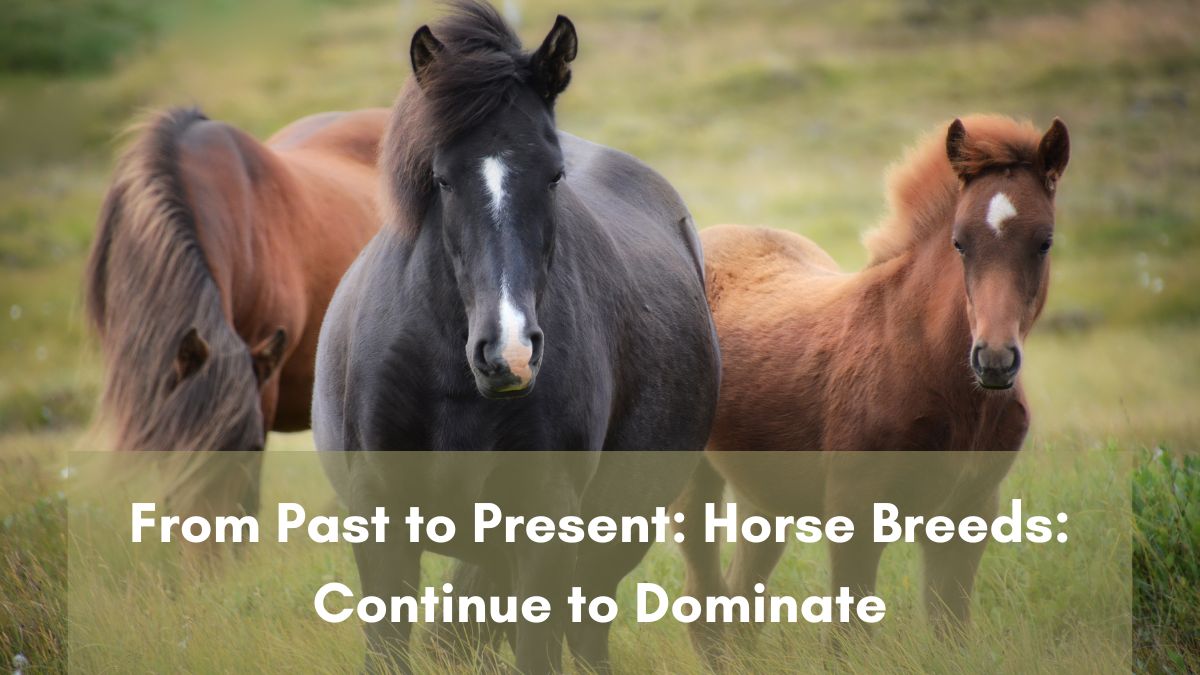In the United States, there are a few rare and unique wild horse species and populations. While most wild horses are descendants of domesticated horses, some of them have become distinct due to isolation and natural selection. Here are some rare wild horse species and populations in the U.S.:
1. Kiger Mustang

- Native to: Oregon, USA
- Status: Rare (not endangered, but a unique genetic population)
- Unique Traits: The Kiger Mustang is known for its strong connection to Spanish horses, as they are descendants of horses brought to the Americas by early European explorers. Kiger Mustangs are known for their athleticism, intelligence, and striking appearance, with many of them having a “dun” coloration (grayish-brown) and a distinctive dorsal stripe along their back. They are found mainly in southeastern Oregon, and their population is managed by the Bureau of Land Management (BLM).
2. Sable Island Horse (Feral Population)

- Native to: Sable Island, Canada, but there is a small population on the East Coast, U.S.
- Status: Vulnerable (a small, isolated population)
- Unique Traits: Though the Sable Island Horse is primarily known from Sable Island in Canada, there is a feral population along the eastern U.S. coast that traces its roots to these hardy island horses. These small, sturdy horses are well adapted to living in harsh, coastal environments. They have a small population and are managed as part of conservation efforts.
3. Chincoteague Pony (Feral Population)
- Native to: Chincoteague Island, Virginia, and Assateague Island, Maryland, USA
- Status: Rare (with a managed population, but historically semi-wild)
- Unique Traits: While Chincoteague Ponies are not technically a “wild” breed in the strict sense, they are descendants of horses that have lived on the islands in a semi-feral state for centuries. These ponies are smaller in stature and are known for their resilience and ability to survive in the challenging conditions of the islands. Their annual swim event has made them famous. They are part of a managed population, and some are adopted through the Chincoteague Pony Rescue program.
4. Mustang (Wild Horses of the American West)
- Native to: Various Western states (primarily Nevada, Wyoming, Utah, and Montana)
- Status: Rare (wild population, but declining in some regions)
- Unique Traits: Mustangs are the descendants of horses brought by Spanish settlers in the 16th century. Over time, they adapted to the wild landscapes of the American West and became a symbol of freedom. While the Mustang is not a single breed, it is an iconic group of wild horses with a varied genetic background. Some Mustang herds have become isolated and have unique characteristics. The BLM manages Mustang populations, but overpopulation and land management issues pose ongoing challenges.
5. Wild Horses of the Outer Banks (Banker Horses)
- Native to: Outer Banks, North Carolina, USA
- Status: Rare (but stable population)
- Unique Traits: The Banker horses of the Outer Banks are believed to be descendants of horses that were brought by Spanish explorers in the 16th century. These horses are small, hardy, and adapted to the unique coastal environment of the Outer Banks. The population is managed by local conservation efforts, and they are considered part of the region’s heritage. Despite their semi-wild status, they are protected by law.
6. Cerbat Mustang
- Native to: Arizona, USA
- Status: Rare (now part of a managed population)
- Unique Traits: The Cerbat Mustang is a unique population of wild horses that were isolated in the Cerbat Mountains of northwestern Arizona. They are believed to be descendants of Spanish horses brought by explorers, and they exhibit physical traits unique to this population, such as the “dun” coloration. Though the population was once small, efforts to protect and manage the Cerbat Mustang have helped maintain their numbers.
7. Salt River Wild Horses
- Native to: Arizona, USA (Salt River area)
- Status: Rare (with protection efforts in place)
- Unique Traits: The Salt River wild horses are a unique population of wild horses that have lived in the Salt River basin in Arizona for centuries. Their lineage likely traces back to Spanish horses, and they are known for their adaptability to the desert environment. These horses are protected by state law, though their population has faced challenges related to habitat loss and human interference.
While many of these populations are protected by law, the overall health and sustainability of wild horse populations in the U.S. remain a significant issue. These horses often face challenges related to overpopulation, habitat loss, and conflict with ranching and land use policies. Conservation efforts continue to play an important role in preserving these rare and wild horses.
Conclusion
The rare wild horse populations in the U.S. represent a unique and invaluable part of the country’s natural heritage. From the rugged Mustang herds of the American West to the hardy Banker horses of the Outer Banks, each group of wild horses has adapted to its environment in distinctive ways. While many of these populations are not officially endangered, they still face significant challenges, including overpopulation, habitat loss, and conflicts with human activities.
Conservation efforts, including legal protections, population management, and breeding programs, play a crucial role in preserving these iconic animals. By continuing to support these efforts, we can ensure that future generations will be able to experience the wild spirit of America’s rarest and most historic horse populations.
FAQ’s
1. What is the status of the Sable Island Horse in the U.S.?
- Answer: The Sable Island Horse is primarily found on Sable Island in Canada, but there is a small feral population along the U.S. East Coast. They are considered vulnerable due to their small, isolated numbers. These hardy horses are well adapted to coastal environments, and conservation efforts help maintain their populations.
2. What challenges do Mustangs face in the American West?
- Answer: Mustangs, the iconic wild horses of the American West, face challenges such as overpopulation, habitat loss, and conflict with ranching and land use policies. While they are descendants of Spanish horses, they are considered rare in some regions, and their populations are managed by the BLM.
3. What is the Kiger Mustang, and why is it considered rare?
- Answer: The Kiger Mustang is a unique population of wild horses native to southeastern Oregon. They are descendants of Spanish horses brought to the Americas by early European explorers. The Kiger Mustang is rare because of its distinct genetic lineage and characteristics, such as athleticism, intelligence, and striking coloration (often “dun” with a dorsal stripe). While not endangered, they are a rare genetic population managed by the Bureau of Land Management
4. Why are Salt River Wild Horses important?
- Answer: The Salt River Wild Horses are an important part of Arizona’s heritage and ecosystem. These horses have lived in the Salt River basin for centuries and are known for their adaptability to the desert environment. Although they are rare, they are protected by state law, and conservation efforts are underway to manage their population amidst challenges like habitat loss and human interference.

